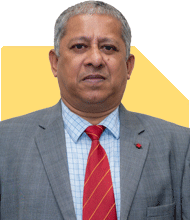Ramalingam Kalirajan |9383 Answers |Ask -Follow
Mutual Funds, Financial Planning Expert - Answered on Oct 24, 2024
He has an MBA in finance from the University of Madras and is a certified financial planner.
He is the director and chief financial planner at Holistic Investment, a Chennai-based firm that offers financial planning and wealth management advice.... more

how to plan the corpus for retirement
Assessing Retirement Expenses and Needs
Begin by estimating your monthly expenses after retirement.
Include costs such as food, healthcare, travel, and lifestyle activities.
Don’t forget rising medical expenses, which tend to increase with age.
Factor in any existing liabilities you may need to repay.
Account for inflation, as prices increase over time.
Plan for emergencies and additional healthcare expenses.
Estimating Life Expectancy and Retirement Duration
The retirement corpus depends on how long your savings need to last.
Assume a longer life expectancy to avoid financial shortfalls.
If you retire at 60, plan for at least 25-30 years post-retirement.
Identifying Income Sources in Retirement
List out all sources of income you can rely on during retirement.
This may include pensions, dividends, rental income, or interest from deposits.
Don't depend solely on one income source, as diversification is essential.
Review how much your savings, investments, and insurance policies will contribute.
Aim to generate enough monthly income to match or exceed your regular expenses.
Asset Allocation: Diversify to Minimise Risk
Asset allocation is critical for balancing growth and stability.
Consider a mix of equity, debt, and liquid funds to spread risk.
Equity funds help counter inflation, while debt funds provide safety.
As you approach retirement, shift more towards safer investments.
Liquid funds ensure you have quick access to cash in emergencies.
Creating Systematic Withdrawal Plans (SWP) for Monthly Income
SWPs from mutual funds allow you to receive regular income.
You can customise the withdrawal amount based on your needs.
SWPs prevent you from depleting your savings too fast.
Withdrawals from equity funds also help reduce tax liability.
This strategy offers better flexibility than fixed deposits.
Health Insurance and Contingency Planning
Comprehensive health insurance is crucial during retirement.
Medical costs can rise, and having insurance reduces financial pressure.
Opt for a personal health cover instead of relying only on group insurance.
Maintain a separate emergency fund for unforeseen expenses.
This fund should cover at least 6-12 months of your monthly expenses.
Tax Planning to Maximise Returns
Manage your withdrawals to minimise tax outflows.
Long-term capital gains (LTCG) from equity mutual funds above Rs 1.25 lakh are taxed at 12.5%.
Short-term capital gains (STCG) are taxed at 20%.
Debt funds now have the same tax treatment as fixed deposits.
Plan withdrawals accordingly to keep your tax liability low.
Avoiding Index Funds and Direct Funds
Index funds may seem simple but offer limited flexibility.
They only track the market and cannot adjust to changes actively.
Actively managed mutual funds, on the other hand, can outperform markets.
Regular funds provide access to professional advice through a Certified Financial Planner (CFP).
Investing through a CFP ensures better fund selection and monitoring.
Reviewing Investments Periodically
Regular reviews help ensure your portfolio aligns with your goals.
Adjust your investments based on market changes and personal needs.
A CFP can assist in rebalancing your portfolio as required.
Managing Inflation and Longevity Risks
Inflation reduces the value of money over time.
A portion of your investments should remain in equity to fight inflation.
Plan for longevity risk by having enough savings to last longer than expected.
Avoid overspending early in retirement to prevent depleting your corpus.
Manage withdrawals carefully to maintain a steady income throughout.
Estate Planning and Wealth Distribution
Ensure all your investments have proper nominations.
Draft a will to distribute your wealth according to your wishes.
Consider setting up a trust if you have specific wealth distribution plans.
Final Insights
Retirement planning requires balancing stability with growth.
Focus on asset allocation to minimise risks and maximise returns.
SWPs provide flexibility and ensure steady monthly income.
Comprehensive health insurance reduces financial stress.
Regular reviews with a CFP keep your investments on track.
A thoughtful plan ensures financial independence throughout retirement.
Best Regards,
K. Ramalingam, MBA, CFP,
Chief Financial Planner,
www.holisticinvestment.in
https://www.youtube.com/@HolisticInvestment
You may like to see similar questions and answers below
Ramalingam Kalirajan |9383 Answers |Ask -Follow
Mutual Funds, Financial Planning Expert - Answered on Sep 21, 2024
Milind Vadjikar | Answer |Ask -Follow
Insurance, Stocks, MF, PF Expert - Answered on Oct 10, 2024
Ramalingam Kalirajan |9383 Answers |Ask -Follow
Mutual Funds, Financial Planning Expert - Answered on Jan 29, 2025
Shalini Singh |166 Answers |Ask -Follow
Dating Coach - Answered on Jul 04, 2025
Dr Dipankar Dutta |1686 Answers |Ask -Follow
Tech Careers and Skill Development Expert - Answered on Jul 04, 2025
Dr Dipankar Dutta |1686 Answers |Ask -Follow
Tech Careers and Skill Development Expert - Answered on Jul 04, 2025
Dr Dipankar Dutta |1686 Answers |Ask -Follow
Tech Careers and Skill Development Expert - Answered on Jul 04, 2025
Dr Dipankar Dutta |1686 Answers |Ask -Follow
Tech Careers and Skill Development Expert - Answered on Jul 04, 2025
Dr Dipankar Dutta |1686 Answers |Ask -Follow
Tech Careers and Skill Development Expert - Answered on Jul 04, 2025
Prof Suvasish Mukhopadhyay |2219 Answers |Ask -Follow
Career Counsellor - Answered on Jul 03, 2025
Adarsh Rai |12 Answers |Ask -Follow
HR, Leadership coach - Answered on Jul 03, 2025
Adarsh Rai |12 Answers |Ask -Follow
HR, Leadership coach - Answered on Jul 03, 2025
Adarsh Rai |12 Answers |Ask -Follow
HR, Leadership coach - Answered on Jul 03, 2025






















